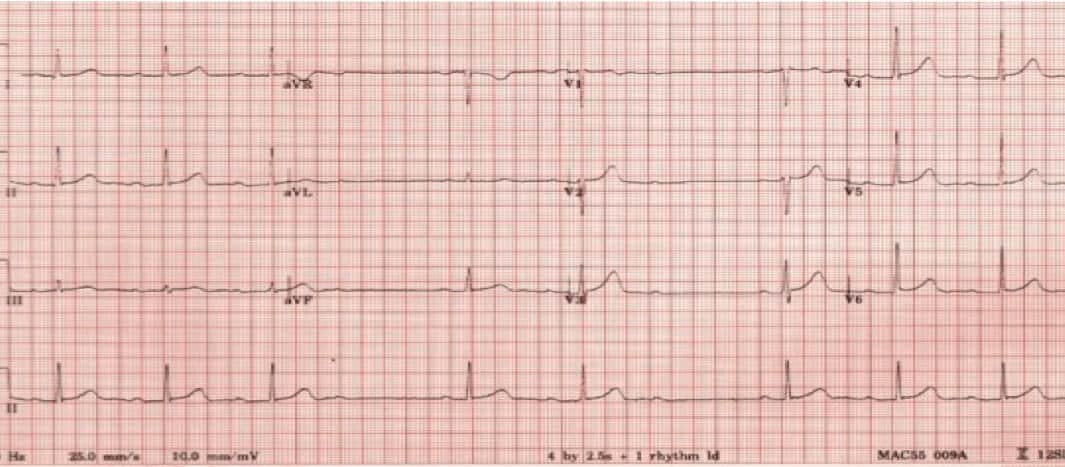A 64 year old male has presented to the emergency department following an episode of chest pain, which has now resolved.
His BP is 140/85, RR is 20 and saturations are 97% on room air.`
He has an ECG. Please interpret.

SOLUTION
Using the ECG in 20 Seconds approach:
Rate: 48 bpm on this ECG
Rhythm: There is a clumping of waveforms that appears irregular. There are P waves, inverted in aVR and upright in II, however not all P waves are followed by a QRS. The P-P interval is constant, and there is a progressive lengthening of the PR interval until there is no conduction of a QRS. The following PR interval is once again shortened to a level prior to the QRS being missed.
QRS: Width is normal, not too tall, not too short and normal morphology
Axis: Normal
ST-T: It is essentially normal, although there is a very mild ST elevation in the anterior leads, that may be ischaemic or early repolarisation. Further ECGs need to be performed.
PR/QT: PR as above and QT is normal.
This is a bradycardia with a type I second degree block i.e. a Wenckebach.
The Wenckebach block may be a result of ischaemia, or a drug affect from digoxin, beta blockers, calcium channel blockers.









